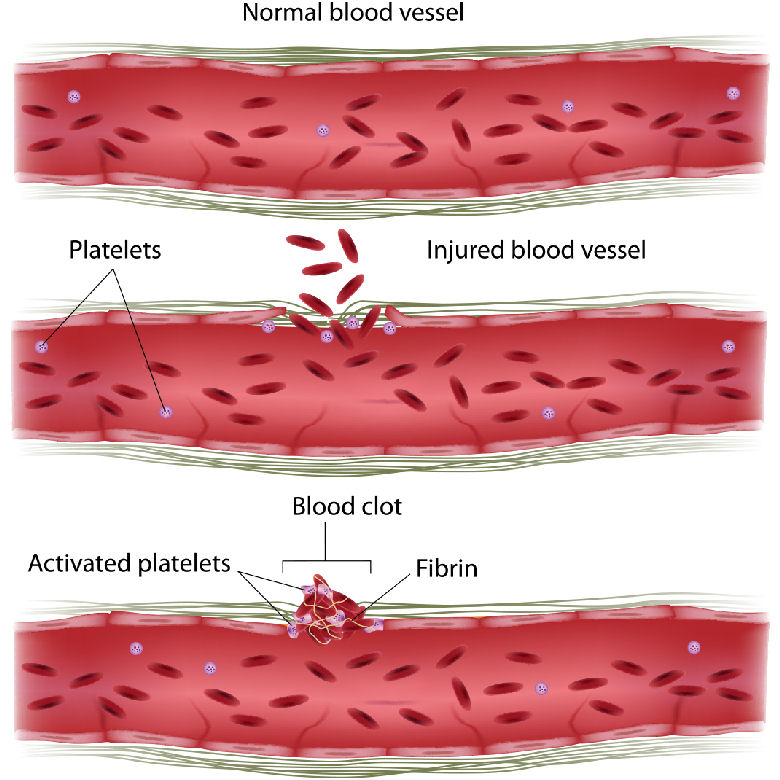173.WHAT MAKES BLOOD CLOT?
We can’t afford to lose any blood. Even though a healthy person can lose as much as one third of all his blood and stilt live, a steady loss of blood, or loss of blood while we are sick, would be very dangerous.
Nature has protected us against this danger by giving blood the capacity to clot. If this clotting took place inside our circulatory system, it would be equally dangerous. So blood does not coagulate, or clot, when it is in contact with the-smooth walls of the blood vessels.
In fact, if blood is poured into a very smooth or lubricated glass vessel, it won’t clot! If you dip a glass rod into blood, it won’t clot either. Yet if you used a wooden rod, clotting would begin!
So it seems that it takes a rough surface, or an injury to the blood vessels, to start the clotting process. The first thing that happens is that very fine threads of a material called fibrin appear in the blood. These threads run every which way and form a kind of network. They entangle all the blood cells like flies in a spider’s web. The blood stream stops moving at this point and is transformed into a kind of swamp of blood cells.
The fibrin threads are firm and very elastic and they hold the blood cells together in a clot. A clot of blood is like a piece of absorbent cotton which nature creates to protect us from loss of blood.
Everybody’s blood clots at a slightly different rate. There are some people whose blood clots very slowly or not at all, and this condition is called hemophilia. It’s a very curious disease because of the way it is transmitted. Hemophilia appears only in men, but it is never transmitted directly from father to son. It is transmitted from the father to the daughter, who remains healthy, but passes it on to her son. So it’s the grandchild of the sick father who gets the disease!
Probably the most famous example in the history of this disease deals with Queen Victoria of England. Both she and her husband transmitted hemophilia from their ancestors. As a result, six of their great-grandchildren had the disease, and two of these were the Spanish Crown Prince and the son of the last Russian Czar!



Leave a Reply